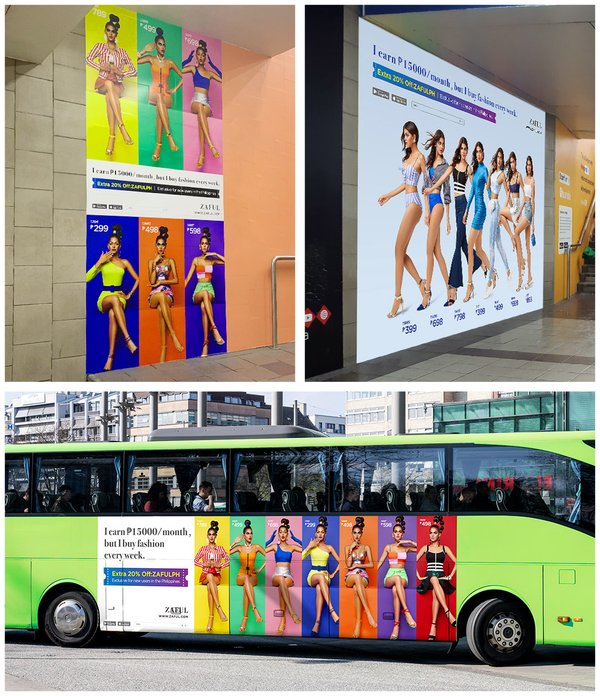Transit Advertising Philippines: Reach Hundreds Of Commuters Daily
Transit Advertising Philippines: Reach Hundreds Of Commuters Daily
Blog Article
Discovering the Influence and Effectiveness of Transportation Advertising in Urban Marketing Methods
Transit marketing has actually ended up being a significant part of urban advertising and marketing techniques, profiting from the special characteristics of mass transit environments. Its capacity to reach a wide and diverse target market offers brands with a possibility to create purposeful connections through regular exposure. However, with the rapid advancement of modern technology and changing consumer behaviors, the landscape of transportation marketing is going through noteworthy modifications that merit closer evaluation. What ramifications do these patterns hold for marketing experts looking for to harness the full possibility of this tool?
The Surge of Transit Advertising
As city populaces remain to swell, the need for cutting-edge advertising and marketing solutions has actually led to the rise of transit advertising and marketing as a pivotal element of urban advertising techniques. This form of advertising and marketing leverages mass transit systems-- such as buses, trains, and trains-- to reach a varied target market in densely inhabited locations. The efficiency of transit advertising and marketing depends on its capacity to involve customers during their everyday commutes, a typically neglected yet crucial time for brand name messaging.
With cities coming to be progressively congested, conventional advertising areas are ending up being scarce and less effective. Transportation marketing offers a vibrant alternative, allowing brands to display their messages in high-traffic areas where potential consumers are constantly exposed to the advertisements. In addition, as metropolitan residents significantly rely upon mass transit, the relevance and presence of transit advertising have actually expanded substantially.
Moreover, technical developments have actually improved the sophistication of transportation advertising, permitting electronic display screens and interactive projects that can capture consumer attention extra successfully than fixed ads. Because of this, transportation advertising and marketing is not just an economical alternative but likewise a crucial strategy for brands seeking to link with urban consumers in a memorable and impactful fashion.
Key Advantages of Transportation Marketing
The efficiency of transportation advertising and marketing is highlighted by its multifaceted advantages, making it a very useful device for city marketing experts. One of the main benefits is its considerable reach; transportation systems offer millions of travelers daily, permitting brand names to connect with a diverse audience in high-traffic atmospheres. This visibility enhances brand name awareness, ensuring that promotions are seen repeatedly by travelers.

In addition, transportation marketing is cost-efficient contrasted to various other media, offering a lower cost per impression while preserving high visibility. The adaptability of ad formats, from bus covers to digital screens, permits imaginative and impactful projects that can adapt to transforming market requirements.
Customer Habits Insights
A substantial part of consumer habits is affected by the prevalent nature of transportation advertising and marketing in metropolitan settings. This form of advertising and marketing captures the interest of diverse demographics, engaging customers during their daily commutes. As people navigate dynamic cityscapes, they come across transportation ads in numerous layouts, consisting of bus covers, subway posters, and digital screens. The calculated placement of these ads makes the most of presence, therefore improving brand recall.
Research indicates that transportation advertising can evoke emotional feedbacks, leading to increased brand name affinity. Consumers typically associate the experience of commuting with specific brand names, developing a long-term perception that affects investing in decisions. Furthermore, the regularity of direct exposure to transportation advertisements cultivates familiarity, which is a crucial consider consumer trust fund and loyalty.

Furthermore, the public aspect of public transport adds to this phenomenon; as individuals share areas, they are most likely to go over and recommend brands they come across. Hence, transit advertising not just reaches Transit Advertising Philippines consumers but likewise promotes social communications that strengthen brand messaging. Understanding these behavior understandings allows online marketers to customize their strategies effectively, making sure that their projects resonate with target audiences in the urban landscape.
Study and Success Stories
Successful implementation of transit advertising and marketing techniques is exhibited with numerous study that highlight its performance in city advertising. One noteworthy instance is the cooperation between a prominent beverage firm and a major city's public transit system. The campaign utilized bus more information covers and indoor posters, causing a 30% boost in brand name recognition and a 15% surge in sales within the target group over three months.
Another effective instance entailed a regional restaurant chain that employed train station advertising to draw in travelers. By creating aesthetically striking ads that provided timed promotions, the dining establishment experienced an uptick in foot web traffic, with an outstanding 25% boost in lunch hour clients.
In addition, a city's tourist board released a transportation campaign showcasing neighborhood attractions through bus stop screens and train ads. The effort caused a substantial increase in vacationer visits, as reported by a 40% boost in queries at site visitor facilities.
These study emphasize the adaptability and potential of transit advertising and marketing to involve city target markets efficiently, showing that tactical positionings can generate considerable rois and boost brand name presence in bustling metropolitan environments. - Transit Advertising Philippines
Future Patterns en route Marketing
As urban landscapes remain to advance, so also does the realm of transit marketing, which is poised to welcome cutting-edge innovations and strategies. One considerable pattern is the combination of electronic advertising and marketing screens right into public transportation systems. These dynamic displays enable real-time updates and targeted web content, improving audience involvement. Furthermore, the fostering of programmatic advertising is expected to obtain energy, enabling marketers to utilize data analytics for more specific audience targeting based on time, area, and market understandings.
One more emerging you can find out more trend is using enhanced reality (AR) and digital truth (VR) experiences within transportation marketing. These immersive technologies can astound travelers, transforming ordinary journeys right into interactive brand experiences. Additionally, sustainability is becoming progressively important; eco-friendly marketing materials and methods are likely to obtain traction, mirroring the growing customer demand for business social responsibility.
Last but not least, the surge of mobile connectivity will facilitate better assimilation between transportation advertising and marketing and individual devices. Marketers can produce smooth cross-channel experiences, permitting for instant communication and interaction with potential consumers. Collectively, these fads suggest a transformative future for transit advertising, providing new avenues for brand names to get in touch with city audiences.
Final Thought
Transit advertising and marketing has actually developed itself as a considerable element of city advertising and marketing methods, demonstrating substantial efficiency with boosted brand name presence and customer interaction. The ability to adapt messages to details demographics, combined with the ingenious use innovation, positions transportation marketing as a driving force in modern marketing (Transit Advertising Philippines). As urban settings continue to develop, the future of transportation marketing promises additional improvements, guaranteeing its significance and influence fit customer perceptions and habits in metropolitan landscapes
As city populations proceed to swell, the demand for ingenious marketing services has led to the rise of transit advertising as a pivotal part of city advertising methods.A considerable portion of consumer behavior is affected by the prevalent nature of transit advertising in city atmospheres. Collectively, these trends show a transformative future for transportation marketing, providing new avenues for brand names to link with metropolitan audiences.
Transit advertising has established itself as a significant component of urban advertising techniques, demonstrating substantial effectiveness through boosted brand name visibility and consumer engagement. As urban atmospheres continue to develop, the future of transportation marketing guarantees further improvements, ensuring its importance and effect in shaping customer assumptions and behaviors in city landscapes.
Report this page